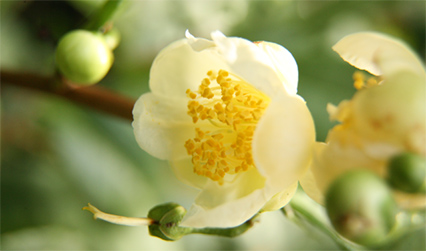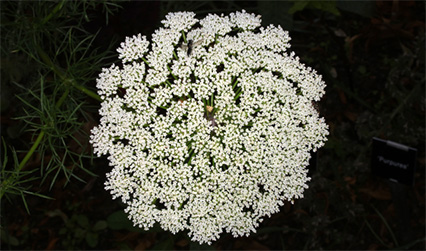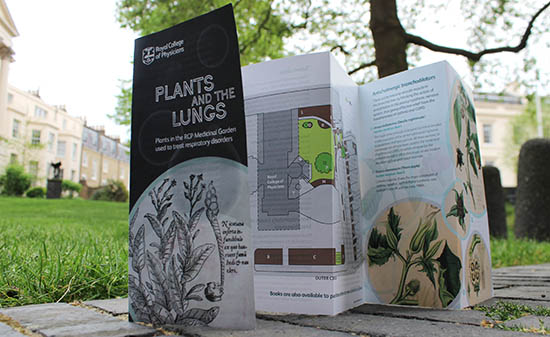The RCP garden has a new garden trail for 2019, inspired by the current museum exhibition Catch your breath.
The new trail, ’Plants and the Lungs’, picks up on the theme of respiration and the lungs. It highlights some of the 1,100 species growing in the RCP garden of medicinal plants which have been or still are used to treat respiratory disorders. These range from tobacco, once seen as beneficial in cases of asthma, to deadly nightshade, the source of atropine which is still in clinical use for the same condition.

Some of the plants might come as a surprise: both tea (Camellia sinensis) and coffee (Coffea arabica), grown on the sun-drenched terrace area, are included. They each contain variable quantities of the compounds caffeine, theophylline, and theobromine. Each of these inhibit an enzyme which causes spasm in the lungs, and therefore have a weak bronchodilator effect, meaning that they relax the lungs and widen the airways.

In 1860, the English physician Henry Hyde Salter (1823–1871) wrote a treatise titled On asthma: its pathology and treatment, with a whole section on the treatment of asthma using coffee. He himself suffered from asthma, and wrote:
One of the commonest and best-reputed remedies of asthma, one that is almost sure to have been tried in any case that may come under our observation, and one that in some cases is more efficacious than any other, is strong coffee. To the question 'Have you tried strong coffee' the asthmatic is pretty sure to answer, 'Yes;' and he is also pretty sure to add that it gives him relief.
Salter notes that the symptoms of asthma are often most pronounced at night, when the patient is trying to sleep. He attributes the effectiveness of coffee as a treatment to the fact that it creates a state of ‘mental activity and vivacity … which is the very reverse of that abeyance of will and perception which, in drowsiness or sleep, so favours the development of asthma.’ Coffee is not, however, recommended as a treatment for asthma today.

On the other hand, the ‘toothpick plant’, Ammi visnaga, is a source of sodium cromoglicate, a compound that blocks allergic responses in the body, and which is sometimes prescribed to prevent asthma attacks.
Plants in the trail come from European, African and Asian medical traditions. Newly-designed signs mark out the plants included in the trail. They’re all charcoal grey, and have a logo of the lungs designed by Karl Simmons, one of the garden volunteers.

The trail leaflet – beautifully illustrated with botanical paintings of the plants – shows you where to find them, and explains their history and use.
Jane Knowles, head gardener and Katie Birkwood, rare books and special collections librarian
- The RCP garden of medicinal plants contains over 1,100 plants, all with links to medicine. The garden is open to the public Monday–Friday, 9am–5pm. Free tours on the first Wednesday of each month at 2pm from March to October. Please call +44 (0)20 3075 1200 to book a place on the tours.
- Catch your breath is curated in partnership with the Life of Breath project team. It’s open free of charge 9am–5pm, Monday–Friday until 20 September 2019. We’re hosting a series of series of events all about breathing and breathlessness to accompany the exhibition.

